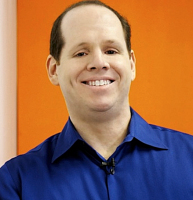The Myth of the Powerful Individual Performer
They’re just not the whole story. Imagine the same villain on a different voyage, leaving the motley garage crew alone and instead landing a few years later when their fledgling company has 50-100 employees. From there, if the villain’s aim is to erase the organization’s future, many more options present themselves: reduce the quality of advice the CEO receives, increase competitiveness between team members to unhealthy levels, encourage the executive team to distance itself from the true workings of the company, prompt employees to prioritize empire-building ahead of company goals, to name just a few! These failure modes leave individual characteristics uncompromised yet render the journey impossible by damaging the system around them.
It’s easy and perhaps reassuring to reframe system problems as individual ones; it’s up to the rock star, we might say, to overcome what gets in the way: get better advice, make team members less competitive, reconnect executive team and company, set expectations for employees to serve enterprise goals. And that’s technically true. Leaders should notice and solve such problems.
Individual Traits vs. Systemic Forces
But how practical is it? Imagine yourself as a time traveling hero, just behind the villain, trying to reverse the damage. This is, after all, the role of executive coach (minus the time travel) – to help the client play to strengths and address gaps today, to prevent problems tomorrow. But coaches don’t have magic wands, so neither do you. Once your time machine lands, you’re an expert coach, but you don’t get a magic wand.
What you do depends upon the problem you face. If you’re back in the garage, the problem statement is clear: help your would-be rock stars rediscover passion and find initiative. This type of work, while certainly not “easy,” is well-suited to the tools and skills of a strong executive coach.
Systemic Challenges Beyond Personal Attributes
The second set of problems in the small company is different: these are not issues of an individual executive, but issues of the system. Coaching would still add value, of course. It might even provide a complete solution. Take, for example, over competitive employees. For a leader in an environment where seven out of 50 people are a little too competitive, role modeling by the boss might do the trick – and that’s coachable. If 15 out of 50 people are somewhat over competitive, direct expectation-setting and some difficult conversations from the leader might move the needle – also great topics for one-on-one coaching. But what if 48 out of 50 people are far too competitive? What if 2,400 out of 2,500 people are overwhelmingly competitive? At some point, individual action isn’t enough. Coaching can support a client through identifying the problem, considering solutions, and even sponsoring an intervention, but 1-on-1 coaching stops being a complete solution when a group of people other than the coaching client need to change. Good coaches know this: “get them to [blank]” is rarely practical as an objective.
Coaches and other practitioners – especially good ones – would be well advised to remind themselves of something we already know: None of us can do everything. It’s so easy, especially riding on the heels of successful executive coaching engagements, to lose track of the limits of what an individual performer can do alone. Pay attention to the broader system at play; watch carefully for the ways in which your client acts on that system, and the ways in which it acts on your client. In Part 2 of this series, we’ll explore that connection in more detail. But there’s no point in exploring it if we can’t even see it – and to do that, each of us must take a step back from the myth of individual initiative.
This article was excerpted from “Of Coaching and Culture: Overcoming Hidden Barriers to Change,” a Group Harmonics Industry Intelligence whitepaper. Visit the archive for the full version, as well as other whitepapers and case studies about changing management culture and norms.
















